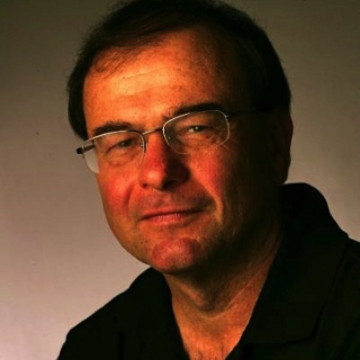Gerald Carbone: My Life As A Blackstone River Guide
Saturday, October 19, 2013
Guiding river tours is challenging, because you never do know what’s going to be round the next bend, believes Gerald Carbone.
My job as tour guide aboard the Blackstone Valley Explorer requires me to step onto the dock and secure the boatful of tourists with a bowline. I leap off, nearly landing atop the fisherman.
In my excitement, I have forgotten the bowline. My stomach shrinks in embarrassment as I stand on the pier sans rope.
GET THE LATEST BREAKING NEWS HERE -- SIGN UP FOR GOLOCAL FREE DAILY EBLASTThe captain, a bearded 20-something named Ken Hudson, calmly backs off. Captain Ken routinely crews on tugs a dozen times heavier than our blue boat. He expertly guides the Explorer into its slip, nudging it against the pier where tourists line up to happily clang the bell before disembarking.
That botched landing marked my most exciting moment as I worked this summer as a part-time guide aboard the tour boat that plies a one-mile stretch of the Blackstone River. Truth is, the one-hour tours aren’t supposed to be exciting; they’re meant to be informative – and relaxing.
The Blackstone Valley Explorer is scheduled to make its last run of the season on Oct. 20, though if there is no rainfall it will run again the following Sunday. Without rain the river is too low to haul the boat out, and if it’s still in on Oct. 27 the boat’s owners, the Blackstone Valley Tourism Council, figure they might as well use it.
Aboard the Blackstone Valley Explorer
I recently made my last scheduled run as a guide, and I will miss it. As my boss, Dianne Mailloux, says, “I think lots of people think of it as that stinky, smelly river, and it’s not. Every time you go out you see something different, or in a different way.”
Guiding river tours is challenging, because you never do know what’s going to be round the next bend. This summer I saw deer along the river’s banks. Deer within a mile of Central Falls, the state’s most densely packed city.
Often I saw blue heron, like winged snakes, crouched to strike at fish. There’s a little kingfisher that perches on overhanging branches and nosily flits ahead of the boat.
Last week we saw cormorants drying their wings from atop snagged logs. As we passed they turned their tails toward us and shot streams of milky guano into the river. “That’s what they think of us,” I said into the microphone.
All of these birds hunt fish. Forty years ago the river’s foul waters sustained only two fish species, carp and white sucker. Now, 41 years after passage of the Clean Water Act, the birds have 43 different fish species to hunt. Swimming among them are large and small mouth bass, which is how it came to pass that a fisherman was crouched with his head between a nine-ton boat and a pier.
Tales of History
I began my trips by telling tourists, “The Blackstone River is one of the most historically significant waterways in North America.” That is not hyperbole.
The Blackstone was site of a Little Big Horn-type annihilation of colonists in King Philip’s War, powered the first spindles of factory production in North America, and spawned a revolution in retail when Sam Walton of Wal-Mart fame visited the Ann & Hope mill store along its banks.
I enjoyed telling tourists, who pay $8 or $10 depending on age, tales of natural history, and of American history that played out along the river. But the best moments were the ones for which you could not prepare – deer, say, or the sudden appearance of a rich rainbow ringing the sun, its prism undulating in the river’s timeless, ever-shifting flow.
Gerald M. Carbone is the author of Nathanael Greene, and was a journalist for twenty-five years, mostly for the Providence Journal. He holds a Master's in Public Humanities from Brown University and has won two of American journalism's most prestigious prizes--the American Society of Newspaper Editors Distinguished Writing Award and a John S. Knight Fellowship at Stanford University. He lives in Warwick, Rhode Island.
Related Articles
- Gerald Carbone: Inside Central Falls’ Iconic Cogswell Tower
- Gerald Carbone: Leave RI’s Historic Gravestones Alone!
- Gerald Carbone: Let’s Tear Down Waterplace’s ‘Wall of Hope’
- Gerald Carbone: Seth Luther, Rhode Island’s Labor Day Hero
- Gerald Carbone: The Beauty In Rhode Island’s Farm Families
- Gerald Carbone: For The Love of Duckpin Bowling
- Gerald Carbone: Herreshoff + RI’s Yacht-Design Genius
- Gerald Carbone: Hot Yoga’s Royalty Comes To Cranston



